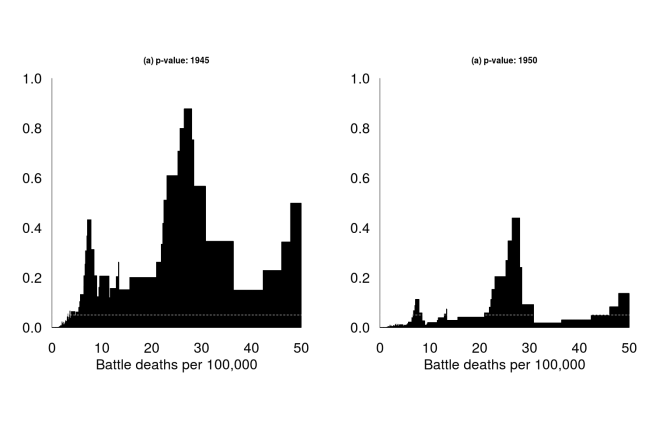From a recent working paper:
we give a simple exposition of the central ideas behind the new critiques of the decline-of-war thesis made by Cirillo and Taleb (2016b) and Clauset (2018). Note that these ideas hinge centrally on the original insight of Richardson (1948) into the fat-tailed size distribution of modern wars. This connection provides the relevance of our paper to the present book. Second, we transform the war-size data into units of battle death per 100,000 or world population rather than absolute battle deaths and argue that these units are appropriate for investigating the probability that a random person will die in a war. We show that this change tilts the evidence towards rejecting the no-change hypothesis; it does not on its own result in formal rejection at a standard significance level but it does move us toward a preponderance of evidence against no change. Third, we show that sliding the candidate break point slightly forward in time, to 1950 rather than 1945, leads us further down the path toward formal rejection of the no-change hypothesis. Finally, we expand range of wars to include not just the interstate wars considered by Clauset (2018) but also intra-state wars. Now we do formally reject the no-change hypothesis. Finally, we show that our results do not depend on the choice between two widely used war datasets.
From one of the authors:
We can read off the picture on the right…that wars killing more than 45 people per 100,000 of world population after 1950 have been much less common than such wars were before 1950. Indeed, the estimated probability that the pre-1950 war generation mechanism continued to operate after 1950 for wars of sizes above 45 per 100,000 is only around 0.05. So we can even formally reject a hypothesis that nothing changed after 1950 for wars of sizes 45 per 100,00 and above.
